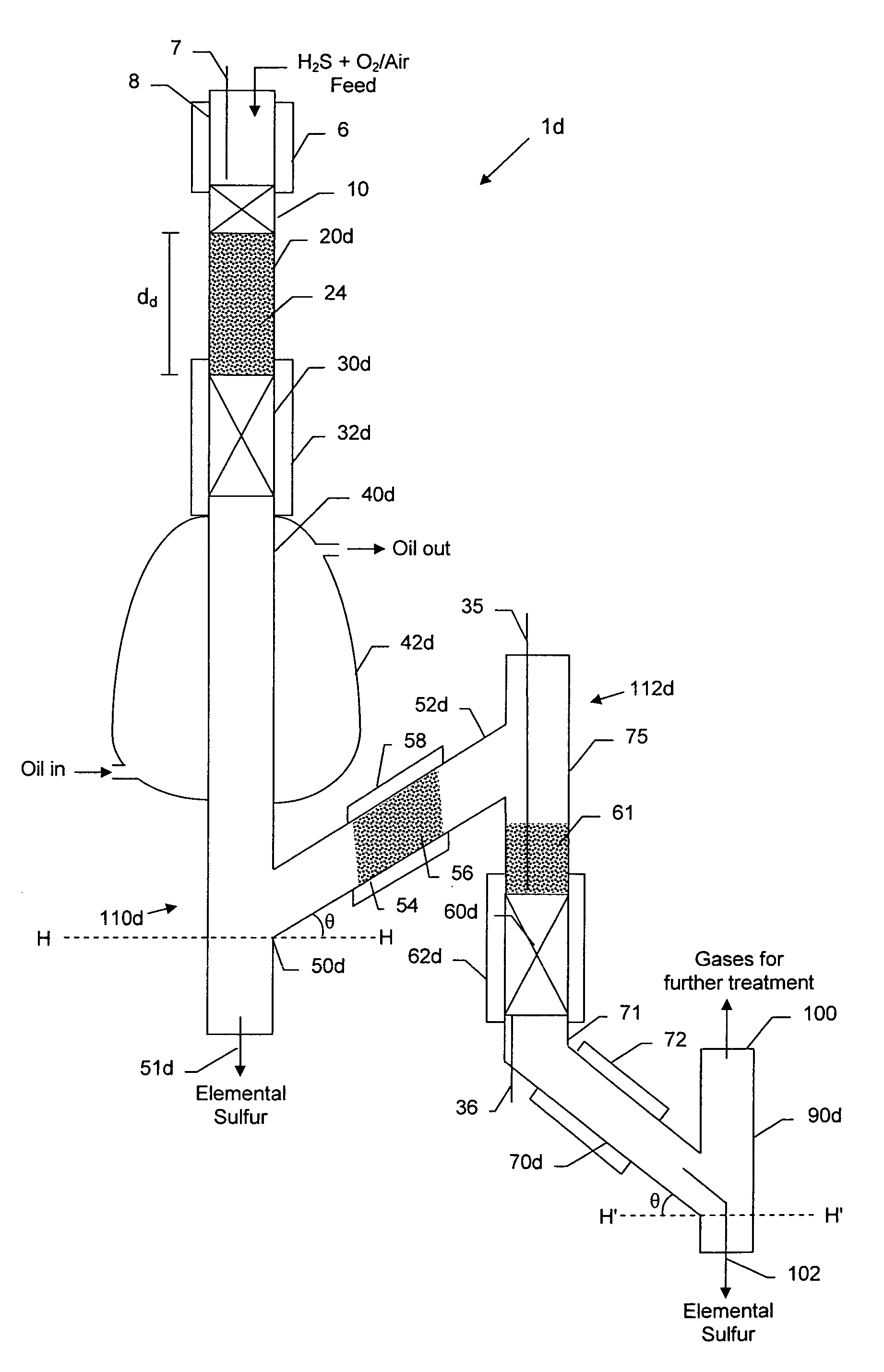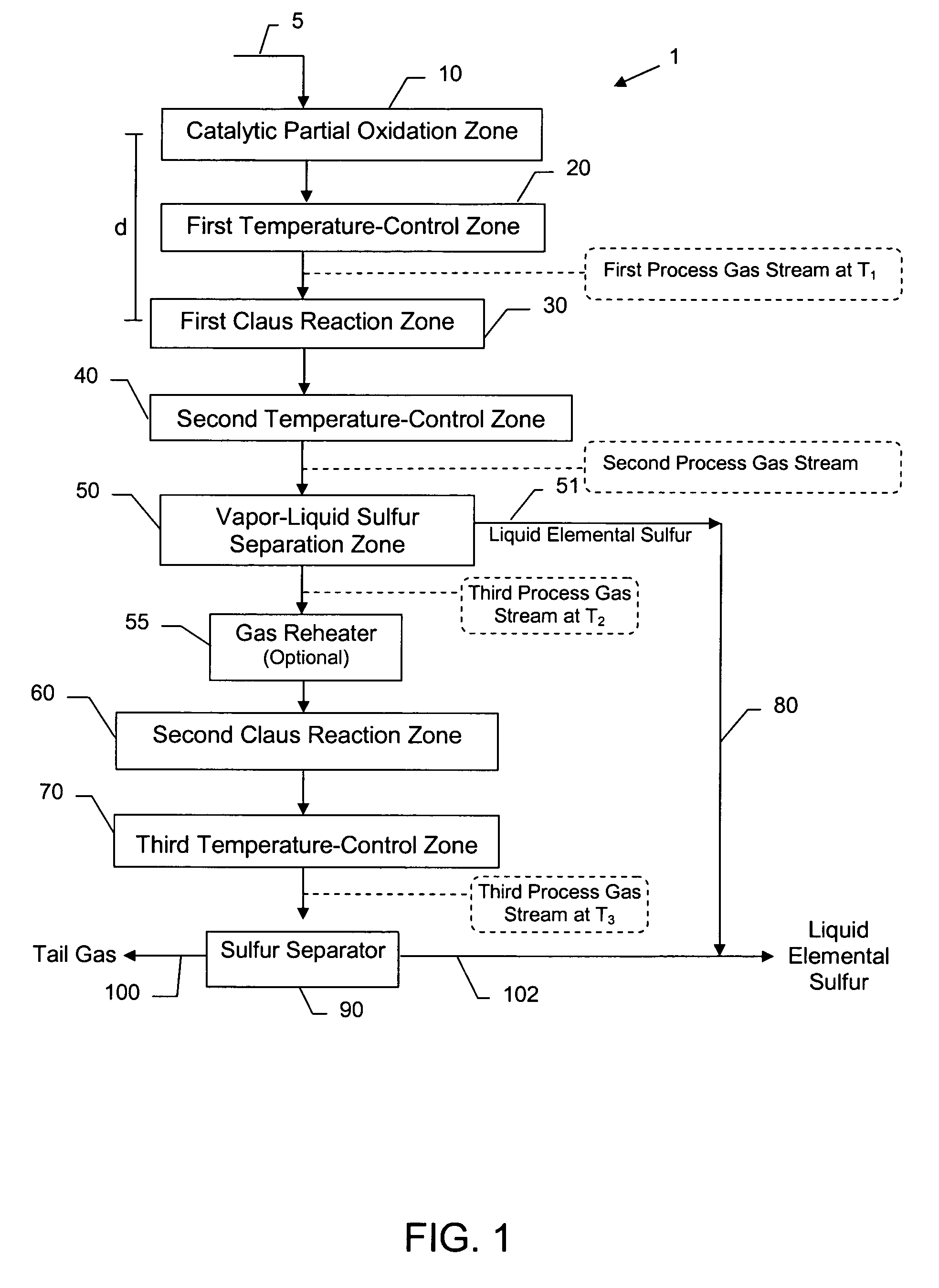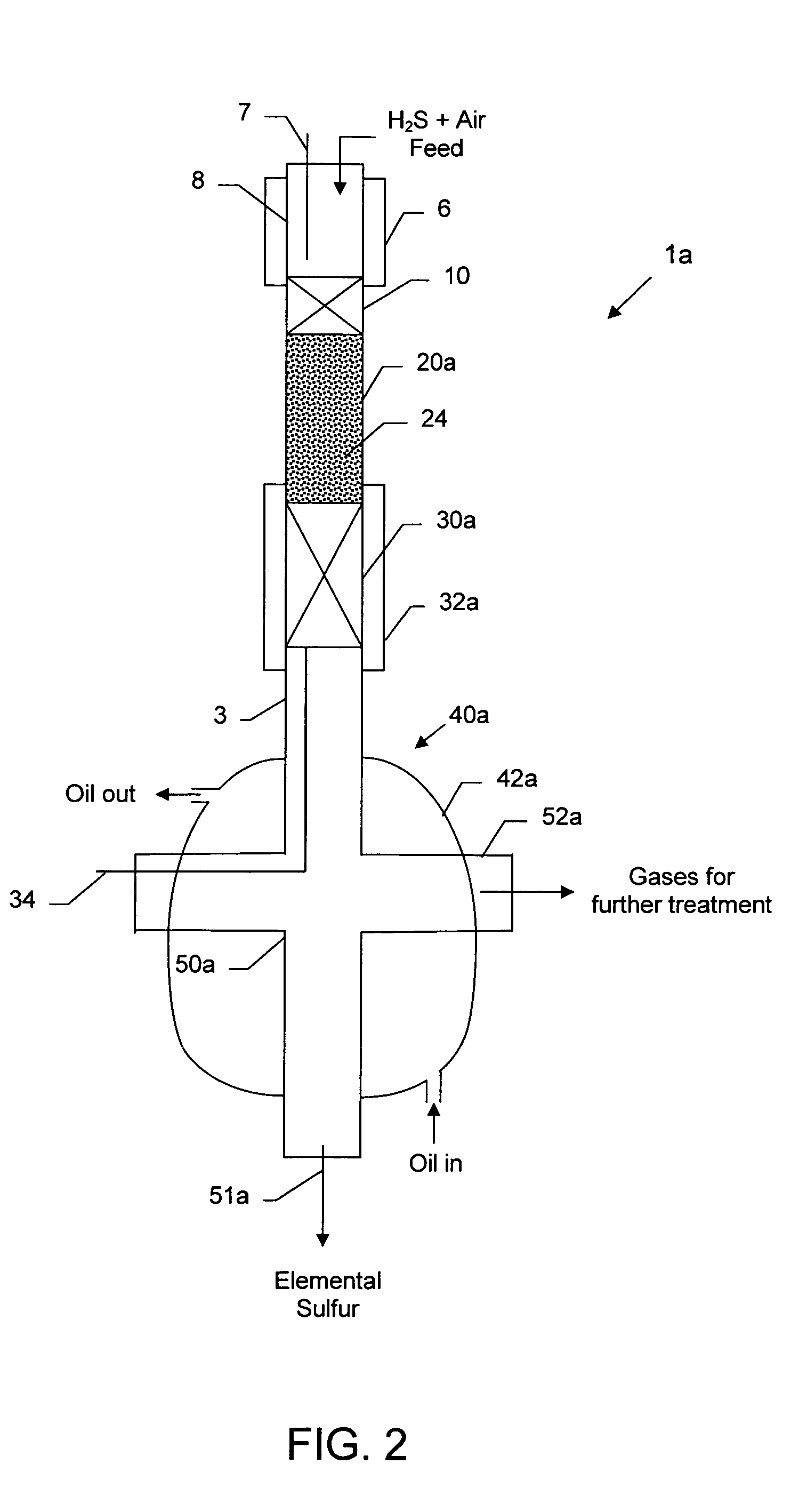Compact sulfur recovery plant and process
a sulfur recovery plant and process technology, applied in the field of claus sulfur recovery plants, can solve the problems of further reducing the capacity of the plant, reducing the efficiency of the claus plant, and the ineffectiveness of the claus reactor, so as to achieve less complex, less costly to build, and less complicated
- Summary
- Abstract
- Description
- Claims
- Application Information
AI Technical Summary
Benefits of technology
Problems solved by technology
Method used
Image
Examples
example 1
Sulfur Recovery Process with Partial Oxidation Catalyst Only
[0062]Three (3) grams of a representative test catalyst comprising 1% iridium, 2% ruthenium deposited on 2% magnesium-coated magnesium oxide granules (20–30 mesh) (MagChem-10, Martin Marietta Magnesia Specialties, Baltimore, Md.) was employed in a laboratory scale sulfur recovery assembly similar to that depicted in FIG. 2, except that the HTEM bed 24, Claus catalyst reaction zone 30 and heating / cooling jacket 32 were absent. The catalyst composition is mentioned in weight percent (wt %), which refers to the amount of metal component relative to the total weight of the catalyst, including the support, if any.
[0063]The catalyst was prepared as described in the section subtitled “Partial Oxidation Catalysts.” The laboratory scale sulfur recovery test was carried out using a modified conventional flow apparatus comprising a quartz reactor with a length of about 20 inches, an outside diameter of 0.74 inch and an inside diameter...
example 2
Sulfur Recovery Process with Partial Oxidation Catalyst and Downstream Claus Catalyst
[0064]To the test assembly of Example 1 was added a Claus catalyst comprising a 9 gram bed (about 0.5 inch diameter×3 inches long) of 1 mm (average) diameter gamma alumina spheres (Sasol) in the quartz tube downstream from partial oxidation catalyst, similar to the configuration shown in FIG. 2, except that the HTEM bed 24 and heating / cooling jacket 32 were absent. The top of the Claus catalyst was located about 3 in. from the outlet of the partial oxidation catalyst bed. The portion of the quartz vessel containing the Claus catalyst was also enclosed in an oil-cooled jacket similar to jacket 42a, to maintain it at a lower temperature. Ceramic foam pieces were placed at the top and bottom of the Claus catalyst. The test data for the catalytic partial oxidation reaction, followed by cooling to about 450° F. (232° C.), Claus reaction and sulfur condensation and removal, is reported in Table 2. In this...
example 3
Selective Staging of the Two Catalyst Bed System
[0065]In the study described in Example 2, even though the portion of the vessel containing the Claus catalyst bed was surrounded by circulating cooling oil, the two-bed system suffered from non-uniform temperature profile along the Claus bed, i.e., the top of the bed was hotter than the desired temperature and the bottom of the bed was cooler than the desired temperature. It was also observed that some liquid sulfur was soaking the back end of the Claus catalyst bed surface, and it was hypothesized that this might have inhibited further conversion in that study by a gradually decreasing sulfur yield as the catalyst zone became incrementally inactivated. To explore this hypothesis, in a repeat test the second (Claus) catalyst bed was carefully situated or staged so as to provide for the liquid sulfur to drain off the catalyst surface effectively to prevent soaking the catalyst surface with the liquid sulfur. The system was oriented ver...
PUM
| Property | Measurement | Unit |
|---|---|---|
| temperatures | aaaaa | aaaaa |
| angle | aaaaa | aaaaa |
| angle | aaaaa | aaaaa |
Abstract
Description
Claims
Application Information
 Login to View More
Login to View More - R&D
- Intellectual Property
- Life Sciences
- Materials
- Tech Scout
- Unparalleled Data Quality
- Higher Quality Content
- 60% Fewer Hallucinations
Browse by: Latest US Patents, China's latest patents, Technical Efficacy Thesaurus, Application Domain, Technology Topic, Popular Technical Reports.
© 2025 PatSnap. All rights reserved.Legal|Privacy policy|Modern Slavery Act Transparency Statement|Sitemap|About US| Contact US: help@patsnap.com



